After 12 years as a primary care physician at MaineGeneral Medical Center, Jennifer McConnell was tired of feeling as though she could never keep up. Though she adored her colleagues and thought she had grown into herself as a doctor during her time at MaineGeneral, McConnell had become increasingly frustrated working in a health care system that required her to see more and more patients, each for less time, in order to make a living.
As a primary care physician, McConnell earns about half what her more specialized peers make. In addition to earning her own wages, she needed to help cover the costs of the administrative staff and complex computer systems needed to work with and bill insurance companies.
But under the insurance fee-for-service model, McConnell was paid only for the time she spent face to face with her patients, so she would need to see a set number of patients each day to cover costs and make a living. By the time she left MaineGeneral, McConnell was carrying a caseload of around 2,000 patients and seeing up to 22 patients a day.
“I was always behind in my charting because I was so busy seeing patients,” McConnell recalled in an interview. “And I would go to the grocery store and patients would say, ‘I can never talk to you. I can never get through the staff to talk to you. It’s six weeks before I can see you.'”
So after seven years in private practice, where she encountered many of the same problems, McConnell has decided to stop accepting most forms of insurance. She is starting to transition her Readfield practice to a direct primary care model, where for $60 a month she will offer patients unlimited primary care.
McConnell’s embrace of the new model comes at an uncertain time for the national health care system as Congress crafts legislation to repeal and replace the Affordable Care Act and insurance premiums continue to skyrocket.
Meanwhile, the Maine Legislature last month passed a law defining direct primary care and codifying the relationship between providers and patients. The new legislation, which Gov. Paul LePage signed into law June 1, clarifies that direct primary care is not a form of insurance and requires providers to inform patients that their direct care contract is not a substitute for insurance and covers only certain types of services. The law also says such direct care is not subject to regulation by the Department of Professional and Financial Regulation, Bureau of Insurance.
Proponents of the direct primary care model say it removes the insurance middleman from the provider-patient relationship, lowering costs and freeing up doctors to spend more time focused on their patients. That extra time, they argue, translates to better care.
Sen. Rod Whittemore, R-Skowhegan, said he sponsored the legislation, L.D. 1385, “An Act Governing Direct Primary Care Membership Agreements,” because he believes the direct primary care model can play an important role in bringing down health care costs. With around a dozen providers offering or shifting to direct primary care, the model is already spreading in Maine. Maine’s legislation makes it the first state in New England with a direct primary care law on the books and the 23rd state in the country, according to DPC Frontier, a website that tracks and provides information about the direct primary care model. DPC Frontier estimates there are currently around 632 direct primary care providers across the United States.
“With this arrangement, people aren’t going to be as hesitant to go to their doctor when they have an issue, because most of the insurance plans have high deductibles and a lot of people just wait until they’re really sick and then end up in the emergency room, which costs more,” Whittemore said. “So I think that’s going to be a big plus from a preventative care angle.”
Paired with another bill passed this month, known colloquially as the “right to shop” — which will require insurance companies to provide patients with pricing information they can use to shop around for the most affordable provider of a particular service as well as, for at least some groups, incentives to do so — Whittemore thinks the Legislature has taken two significant steps toward lowering health care costs in the state.
NOT ENOUGH DOCTORS
Yet even supporters of direct primary care say it is more a stopgap than a solution for broad health care reform.
Gordon Smith, executive director of the Maine Medical Association, says he supported the bill, believes the model provides flexibility for physicians in private practice and can benefit patients with high deductibles or chronic conditions. But he argues direct primary care does not eliminate the need for insurance or ensure universal access to care.
“We like direct primary care, but it’s just one slice of the pie; and the Congress and this Legislature have to think about the whole pie and how we’re going to get everybody covered for what they need,” Smith said.
Dr. Patrick Connolly, president of the Maine Academy of Family Physicians, echoes Smith’s concerns and says while the academy believes the model is a good alternative for patients and providers, it will have limited reach in Maine, where around 80 percent of the state’s primary care physicians are employed by hospitals or health care outfits that accept insurance.
Those physicians would be unable to adopt the model unless their entire organization did so.
Further, Connolly warns that, if widely adopted, direct primary care could exacerbate existing primary care physician shortages. There were an estimated 1,673 active primary care providers in Maine in 2014 — or about 126 physicians for every 100,000 Mainers, according to the Association of American Medical Colleges. Maine may seem, on paper at least, better positioned than many states in the country, but Connolly argues the top-line numbers don’t give the full picture.
“The numbers at first glance may seem adequate, but in actual practice only a percentage of (those physicians) are doing full-time primary care,” Connolly said. If more practitioners moved into direct primary care, Connolly worries, “we would probably need twice as many family doctors as we have now, and already we don’t have enough doctors to fill the posts we have.”
But Michael Ciampi, a South Portland doctor using the direct care model, argues that the change makes family practice more attractive and feasible for medical students and residents who often graduate with six-figure debt loads. Without the administrative costs of insurance, Ciampi says, new doctors could keep overhead lower and funnel more of their earnings toward debt relief. He also believes the model will keep more doctors in the field by preventing the kind of burnout that has driven some practitioners out of medicine altogether.
“Overall, our personal and professional satisfaction is two to three times better than it was when we had to deal with insurance companies,” Ciampi said. “We see that we can spend more of our time focusing on patients as they come in rather than having an assembly line and having them in and out so we could try to generate enough revenue to stay in business.”
HEALTHIER RESULTS?
Transitioning his practice starting in 2013, Ciampi was one of the first physicians in Maine to offer the direct primary care model.
“I love it because I actually do better financially, the healthier I keep my patients,” Ciampi said. “In the old model, where I was getting paid every time they came in, I actually had this strange incentive. I had to hope for people to get sick in order to make a living, and that just didn’t feel right.”
Ciampi has worked in a single-payer health care system in the Navy, insurance-based fee-for-service at Mercy Hospital and now direct primary care. He feels strongly that the direct care model works best for both patients and providers and offers the best value for primary care services.
Without the administrative burden of insurance paperwork, Ciampi says, he is able to keep his practice small and overhead low, with only three staff members, including himself. He passes those savings on to his patients, providing unlimited primary care for a $50 a month subscription fee for an individual, $95 for a couple or $140 for a family.
With a steady and predictable income stream coming in each month, Ciampi is free to treat patients in person, by phone or email, as appropriate. He’s just starting to get into text messaging and videoconferencing. Instead of forcing patients to make appointments weeks in advance, he usually can get them in for an appointment the same day or the next business day; and when patients do come in, Ciampi says, he is now able to spend more time with them.
His minimum appointment is 30 minutes. For new patients, he’ll spend at least an hour.
“We really think we are providing great care at a pretty affordable price,” Ciampi said.
Ciampi is also a founding member affiliated with the website MaineDirectCareNetwork.com.
In addition to unlimited primary care, direct primary care providers can offer access to cheaper generic medications at a minimal markup as well as discounted laboratory and imaging services. For some of Ciampi’s patients, the money they save on medication more than pays for their monthly subscription to his practice.
That’s not to say the transition to direct primary care was a smooth one for Ciampi. He lost more than 1,500 patients when he made the change, winnowing his caseload down from around 2,000 patients to just a few hundred. He has been slowly gaining new patients but described the first three years after the transition as “very, very lean.”
Ciampi attributes some of his rocky start to the unfamiliarity of the new system. Many patients assume they cannot afford a doctor who works outside of the insurance system. Others mistake direct primary care for the more expensive concierge services model, which also offers unlimited primary care, but for significantly more money each month. But Ciampi argues that he ultimately saves his patients money by keeping them healthy enough so that they do not need to start tapping into their insurance deductibles.
Like other direct primary care providers, Ciampi encourages his patients to maintain high-deductible insurance in case they require specialist care or in the event of an emergency or hospitalization. Currently, Ciampi says he has a good mix of patients with Medicare and commercial insurance as well as a significant number of uninsured patients.
“We don’t have many millionaires in our practice. We have a lot of people who are self-employed and don’t have a lot of money to spare, and we’re really a good fit for those folks,” Ciampi said.
Sitting in a light-filled examination room, Harriet Morris, 55, of Readfield, said when she learned Jennifer McConnell, her physician of 18 years, was transitioning to the direct primary care model starting in July, she asked to sign up early. Morris has a high-deductible insurance plan and said she would sometimes put off going to the doctor, but with direct primary care she knows she can reach McConnell at any time and get into the office with little hassle, if needed.
“With Jenn it’s just her and I. I have her undivided attention,” Morris said. “She knows me and we have that good doctor-patient relationship that a lot of people don’t have, and that’s important to me.”
Kate McCormick — 861-9218
kmccormick@centralmaine.com
Twitter: @KateRMcCormick
Send questions/comments to the editors.


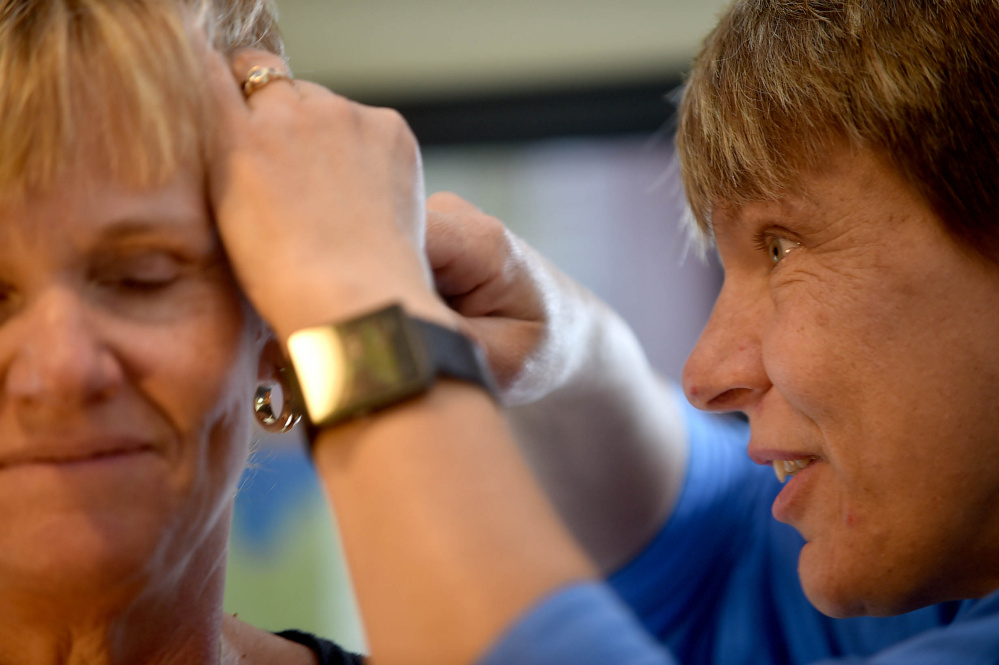
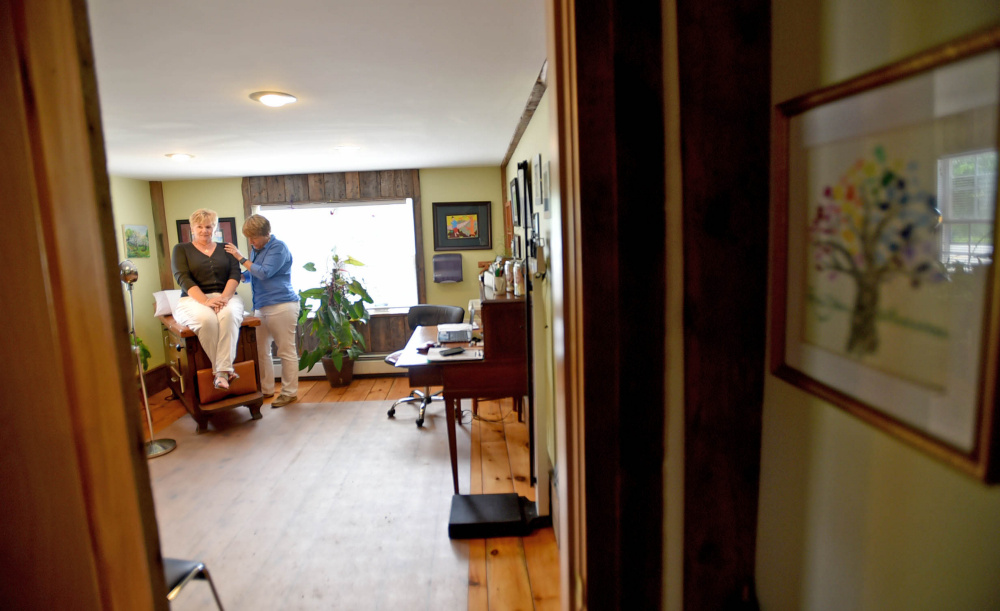
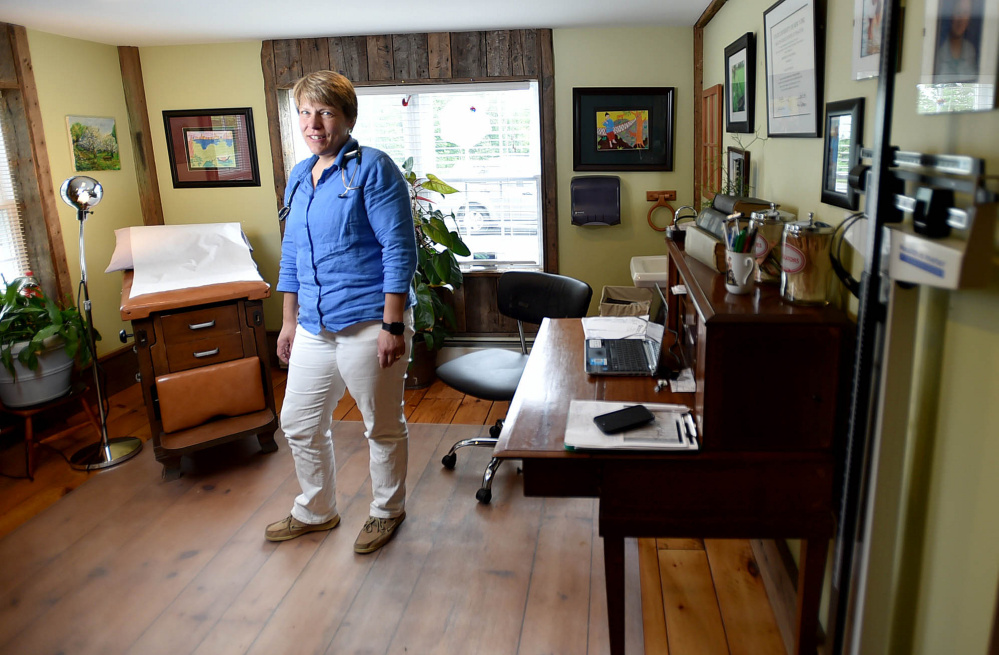
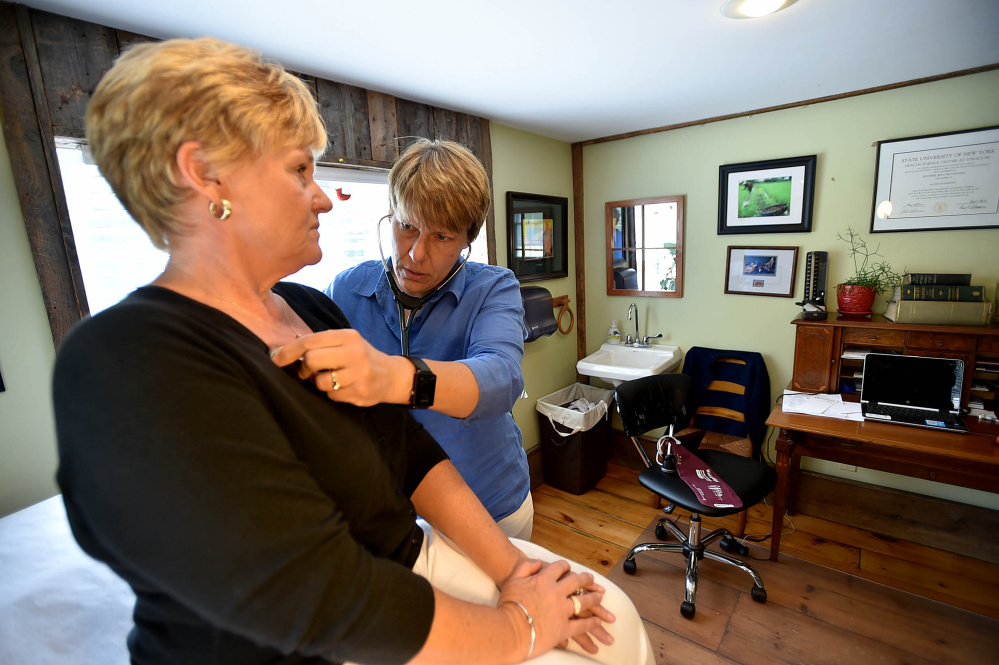
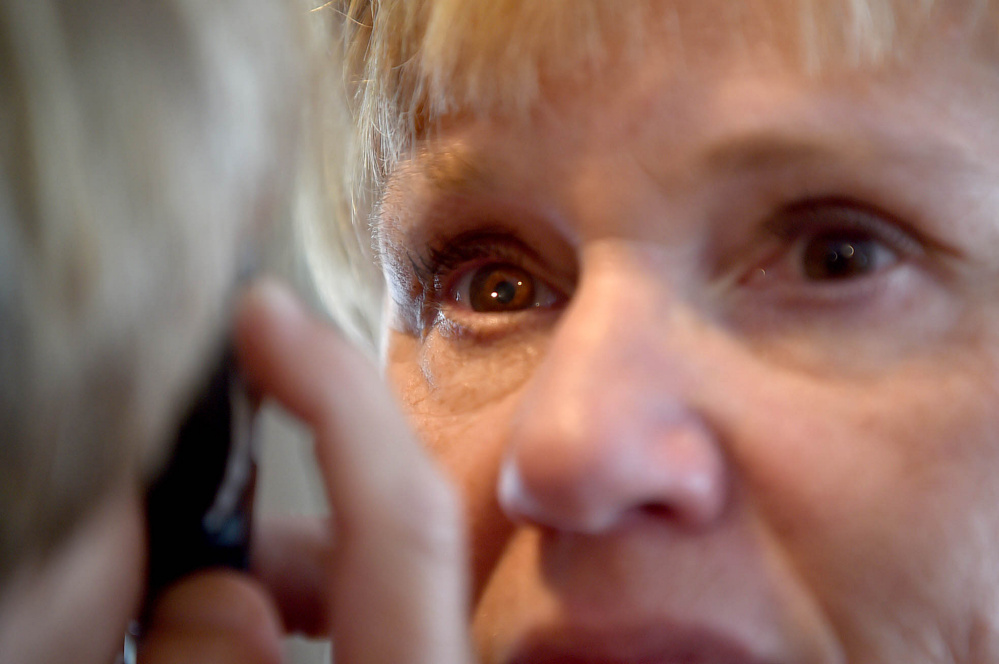
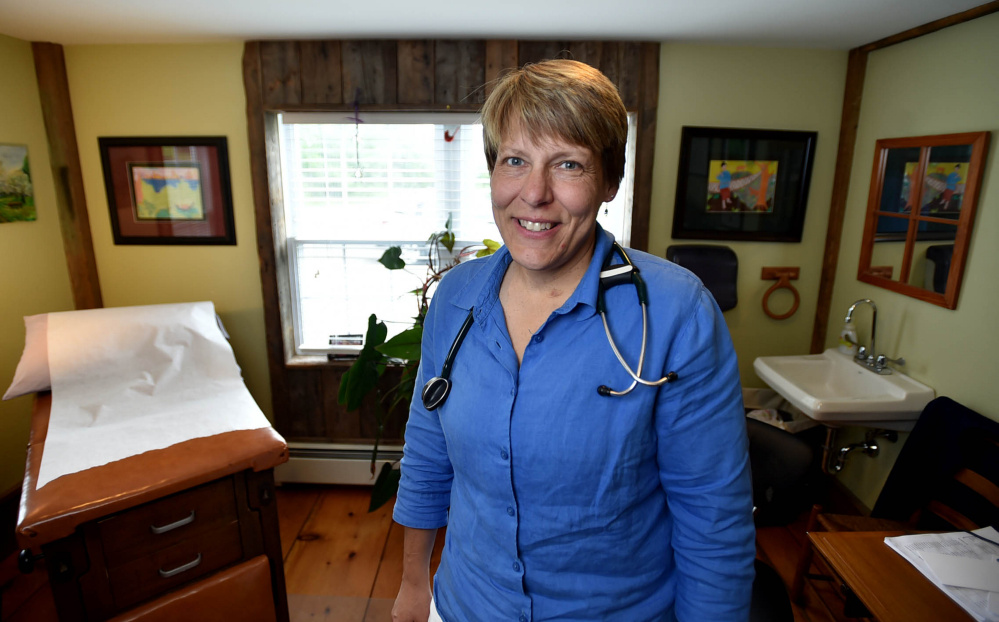
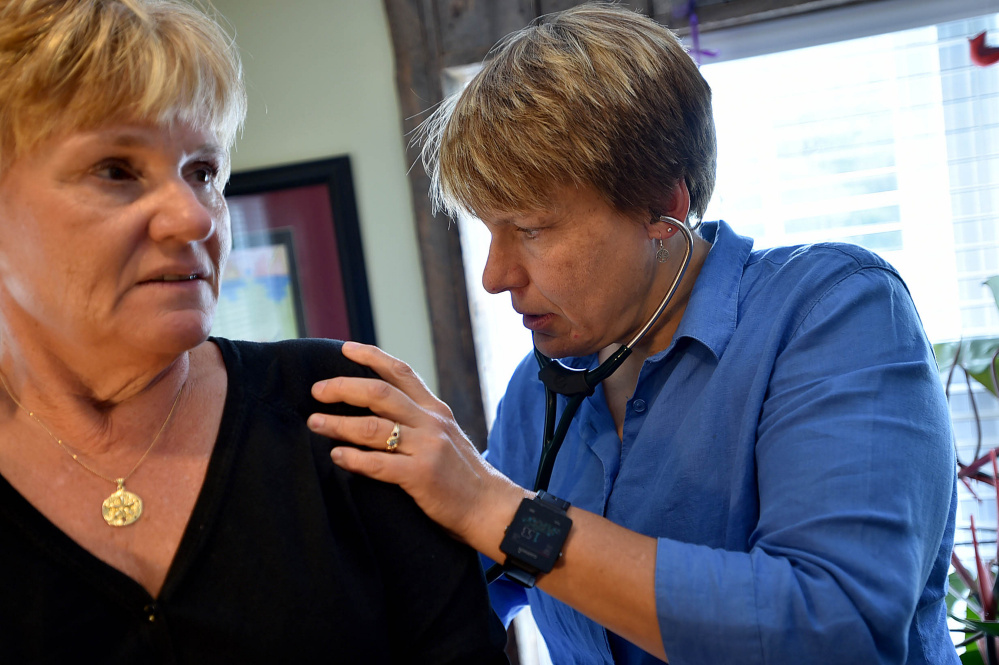

Success. Please wait for the page to reload. If the page does not reload within 5 seconds, please refresh the page.
Enter your email and password to access comments.
Hi, to comment on stories you must . This profile is in addition to your subscription and website login.
Already have a commenting profile? .
Invalid username/password.
Please check your email to confirm and complete your registration.
Only subscribers are eligible to post comments. Please subscribe or login first for digital access. Here’s why.
Use the form below to reset your password. When you've submitted your account email, we will send an email with a reset code.